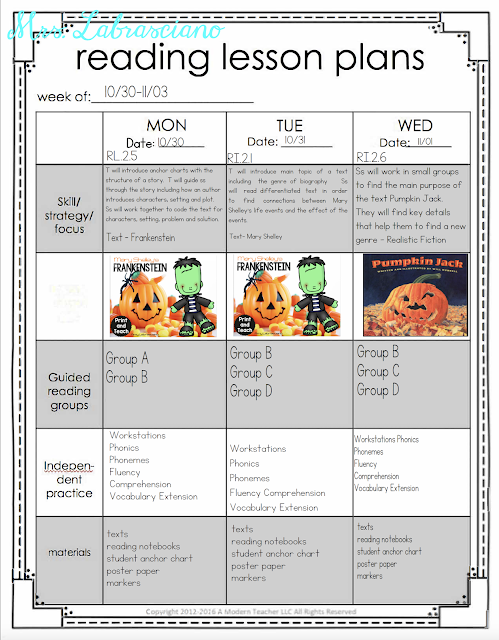Every teacher knows that this week has the kids acting a little bonkers. You'll notice that while my lessons all have a Halloween theme, they would work for classrooms that don't address Halloween with the exception of Big Pumpkin and Happy Haunting. You could just switch out the titles if you prefer. I'm super excited that I spent the beginning of the year building up student's reading foundations because we are starting Monday with the entire plot of the story. Students will get into coding the text with the different parts and even have conversations about the author's point including the lesson/central message. The fact that they can do this efficiently in a 20-30 period of time is awesome! Tuesday's lessons is all about Mary Shelley who had a rough childhood which she overcame to become an infamous author. Students will connect events in her life to choices and other events. In case you don't know, I'm a HUGE Pumpkin Jack fan. It is a realistic fiction book that follows a boy and his pumpkin through the pumpkin's entire life cycle. We will put a pumpkin outside the following day and watch it decompose and sprout a pumpkin patch. If you want to see detailed lessons on Pumpkin Jack visit here. Thursday and Friday focus on fun, engaging simple text. Students are not going to be at their finest and I would rather see them accomplish something rather than nothing.
Just like reading, I feel like we've turned a big corner in writing. We are taking our first standardizes writing assessment and really editing it. We'll only be focusing on contrasting to start. Once they have mastered certain crafts and structure we will add to the standard with comparing too.
My lesson plan templates come from A Modern Teacher. If you want to find the first in my lesson outlines click here.













































